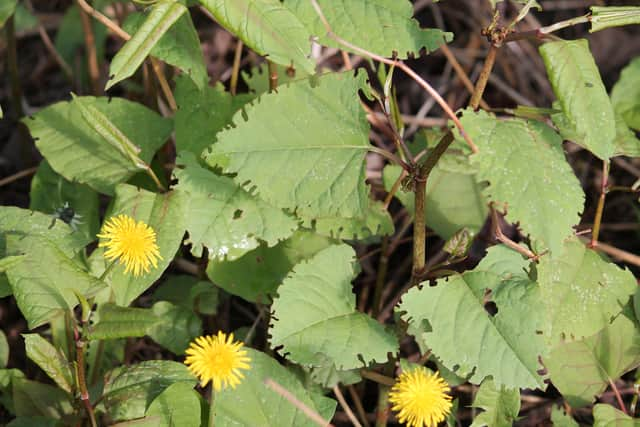Japanese Knotweed hotspots in Bristol: Where invasive plant can be found - after home buyer sues for £200k
and live on Freeview channel 276
After news broke that a London homebuyer successfully sued the former owner of a house after discovering a large amount of Japanese Knotweed on the property, it could be vitally important to check to see where the invasive weed has been reported in Bristol and across the South West of England. Ever since 2013 it has been a legal requirement to make a seller aware of the presence of Japanese Knotweed, and if not followed could have financially hard hitting consequences.
Japanese Knotweed is one of the biggest headaches for gardeners across the UK due to the fact it can grow rapidly, leading to your garden being totally taken over by the plant. According to specialists, Environet, not only can Japanese Knotweed cause problems to surrounding flora, but it can also block drains, destroy asphalt, collapse brick walls, damage cavity walls and lift patios, among other expensive issues.
Advertisement
Hide AdAdvertisement
Hide AdIt is important to be on the lookout for the invasive plant. Keeping it contained and treating it quickly are perhaps easier said than done, but there is plenty you can do.
The Royal Horticulture Society defines Japanese Knotweed as: “A weed that spreads rapidly. In winter the plant dies back to ground level but by early summer the bamboo-like stems emerge from rhizomes deep underground to shoot to over 2.1m (7ft), suppressing all other plant growth. Eradication requires determination as it is very hard to remove by hand or eradicate with chemicals.”
Japanese Knotweed can be found from spring through to autumn and is best to be treated in the summer months.
What does Japanese Knotweed look like?
According to the RHS, Japanese Knotweed has reddish/purple shoots which emerge in spring. These grow rapidly, producing in summer, dense stands of tall bamboo-like canes which grow to 2.1m (7ft) tall. These canes have characteristic purple flecks, and produce branches from nodes along its length.
Advertisement
Hide AdAdvertisement
Hide AdLeaves are heart or shovel-shaped and up to 14 cm in length and borne alternately along the stems. The stems die back to ground level in winter, but the dry canes remain for several months or longer.
Japanese Knotweed hotspots in Bristol


In Bristol there are many reports of Japanese Knotweed. Bristol has a high concentration of sightings of the invasive plant, with a high presence in areas such as Kingswood, around Abbots Leigh, heading towards Avonmouth and a number of others in and around the city.
This can be looked at in more detail through the Environet interactive map which has a hotspot checker, updated using data collected from around the country. To check it out, visit their website.
Comment Guidelines
National World encourages reader discussion on our stories. User feedback, insights and back-and-forth exchanges add a rich layer of context to reporting. Please review our Community Guidelines before commenting.
